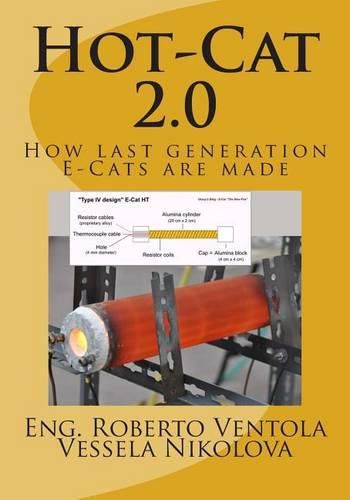Readings Newsletter
Become a Readings Member to make your shopping experience even easier.
Sign in or sign up for free!
You’re not far away from qualifying for FREE standard shipping within Australia
You’ve qualified for FREE standard shipping within Australia
The cart is loading…






A Hot-Cat is the high-temperature version of the E-Cat, the Energy Catalyzer invented by Andrea Rossi, a reactor which provides clean energy at an extremely low cost. The first step to be taken in order to replicate in your laboratory a so-called Hot-Cat 2.0 - i.e. a last generation Hot Cat - is to understand how it is done and what are the differences between an original low temperature E-Cat and a modern Hot-Cat. Reading this book, the reader will understand perfectly how the new Hot-Cat 2.0 is a much more sophisticated apparatus than you might imagine from an its superficial analysis. The book is aimed primarily at those who, having already understood the basics of an E-Cat, want to move on to an industrial product, or, that is to say, a second-generation E-Cat, requiring a better knowledge of the E-Cat technology. Many people still think of the E-Cat with old patterns, but the evolution of this product has finally led from what was apparently a rudimentary reactor prototype to a real small gem of science and technology.
$9.00 standard shipping within Australia
FREE standard shipping within Australia for orders over $100.00
Express & International shipping calculated at checkout
A Hot-Cat is the high-temperature version of the E-Cat, the Energy Catalyzer invented by Andrea Rossi, a reactor which provides clean energy at an extremely low cost. The first step to be taken in order to replicate in your laboratory a so-called Hot-Cat 2.0 - i.e. a last generation Hot Cat - is to understand how it is done and what are the differences between an original low temperature E-Cat and a modern Hot-Cat. Reading this book, the reader will understand perfectly how the new Hot-Cat 2.0 is a much more sophisticated apparatus than you might imagine from an its superficial analysis. The book is aimed primarily at those who, having already understood the basics of an E-Cat, want to move on to an industrial product, or, that is to say, a second-generation E-Cat, requiring a better knowledge of the E-Cat technology. Many people still think of the E-Cat with old patterns, but the evolution of this product has finally led from what was apparently a rudimentary reactor prototype to a real small gem of science and technology.